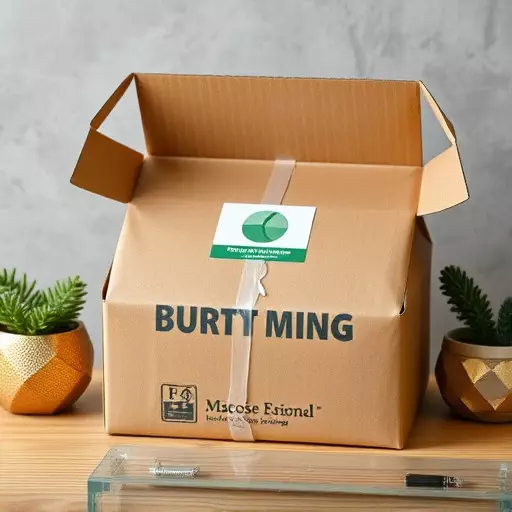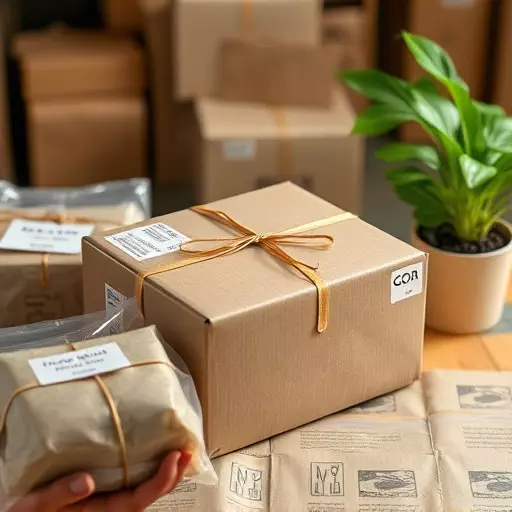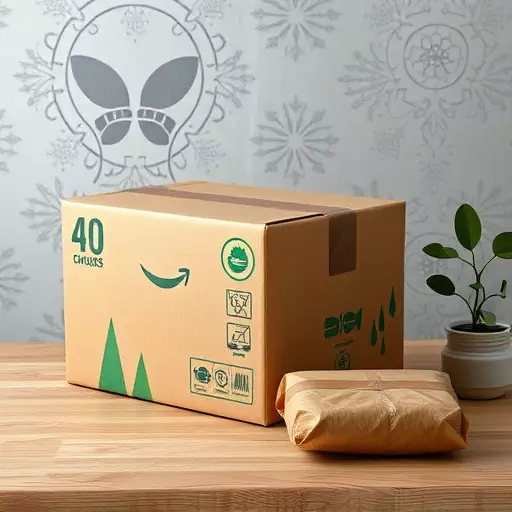In today’s market, transitioning to eco-friendly fragile packaging is a game changer, driving businesses towards custom fragile packaging solutions that balance product protection and environmental impact. Automation technologies, including robotic systems and computer vision algorithms, enable manufacturers to create these sustainable packages through advanced processes. Benefits include streamlined packing, reduced manual labor, and minimized waste. However, challenges such as high initial costs and maintenance requirements must be addressed.
In today’s fast-paced world, efficient and secure fragile packaging automation is vital for businesses seeking to protect their products during transit. This comprehensive guide explores the diverse landscape of fragile packaging automation, from understanding its fundamentals to delving into cutting-edge technologies transforming the industry. We analyze the rise of custom solutions, eco-friendly alternatives, and the myriad benefits and challenges of implementation. Furthermore, we shine a spotlight on future trends, highlighting innovations set to redefine fragile packaging solutions.
- Understanding Fragile Packaging Automation: A Comprehensive Overview
- The Rise of Custom Fragile Packaging Solutions
- Eco-Friendly Alternatives: Sustainable Fragile Packaging Options
- Automation Technologies Transforming the Industry
- Benefits and Challenges: Implementing Automated Fragile Packaging Systems
- Future Trends in Fragile Packaging: Innovations to Watch
Understanding Fragile Packaging Automation: A Comprehensive Overview

The Rise of Custom Fragile Packaging Solutions

Eco-Friendly Alternatives: Sustainable Fragile Packaging Options

In today’s world, where environmental consciousness is at an all-time high, the demand for eco-friendly fragile packaging solutions has surged. Traditional packaging materials often contribute to significant environmental impact due to their non-biodegradable nature. However, the rise of sustainable practices offers a promising alternative for both businesses and consumers. One such area gaining traction is the development of custom fragile packaging options designed with the environment in mind.
These innovative fragile packaging solutions utilize renewable resources like paper, bamboo, and plant-based plastics to create protective wrapping that minimizes harm to the planet. Many companies now offer specialized services for creating custom packaging tailored to specific product needs while ensuring environmental responsibility. This shift towards green practices not only reduces waste but also caters to the growing consumer preference for sustainable products, making it a vital step towards a greener future.
Automation Technologies Transforming the Industry

In today’s competitive market, automation technologies are revolutionizing the fragile packaging industry. Advanced robotic systems and computer vision algorithms now play a pivotal role in creating innovative fragile packaging solutions. These technologies enable manufacturers to produce custom fragile packaging that not only meets but exceeds customer expectations for product protection during transit.
The shift towards eco-friendly fragile packaging is another significant trend driven by automation. Sustainable materials and intelligent design strategies, guided by automated processes, are minimizing waste and reducing the environmental impact of packaging while maintaining superior protection for delicate items. This dual focus on customization and sustainability positions automation as a key enabler for the future of the industry.
Benefits and Challenges: Implementing Automated Fragile Packaging Systems

Implementing automated fragile packaging systems offers a myriad of benefits, revolutionizing the way businesses handle delicate items. These advanced solutions streamline the packing process, reducing manual labor and potential human errors. Automated machines can precisely measure and apply the right amount of cushioning material, ensuring products arrive safely with minimal damage. Custom fragile packaging becomes more accessible, allowing brands to create unique, tailored protective envelops for specific product requirements.
Despite these advantages, challenges exist when adopting automated fragile packaging technologies. Initial investment costs can be significant, deterring smaller businesses. Moreover, maintaining and updating these systems demand specialized knowledge. Environmental considerations are also crucial; while eco-friendly fragile packaging materials contribute to sustainability, the overall ecological impact of automation and waste reduction needs careful evaluation.
Future Trends in Fragile Packaging: Innovations to Watch



